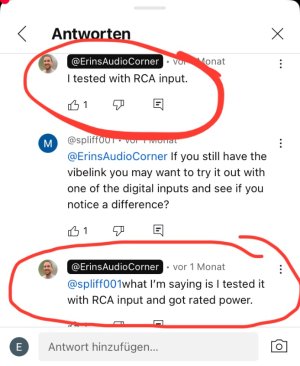Hi there, I have a question regarding the vibelink's rca input: I've read that it is supposed to provide only half of the amp's power capability, but this doesn't appear on the tech specs provided by wiim, does it? Or at least not the ones I found on wiimhome.com
You're absolutely right, there's
no mention of a limited power output (60 W instead of 100 W into 8 ohm, 120 W instead of 200 W into 4 ohm) when using the RCA inputs anywhere in the
device specs on the website or in the
online user manual.
TL; DR:
That's pretty much the whole story from my point of view.
The lower power output
has been mentioned by WiiM in this forum and yes, it could also be found in the Vibelink Amp
printed manual (at least for the first batch of amplifiers):
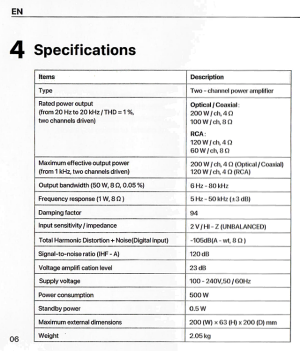
The explanation given in the above mentioned edition of WiiM Talks has been - let me put that clearly - rather adding to the confusion.
Now, the real trouble with power measurements is how hard it is to compare them. It's just not like any amp naturally "having" a certain power output and reviewers just have to "confirm" it. Luckily some standards are pretty much established by now, but there is still a lot of discussion going on about how and what should be measured. We must make sure to compare them like for like.
Also, on Erin's Audio Corner it has been tested using the rca input and reached the power specs.
I'm not entirely sure if Erin explicitly mentioned that he's been using the RCA inputs (and unfortunately he still didn't publish the measurements of the Vibelink Amp on his website), but I think that you are 100% right again. Erin does mention that he managed to trigger the protection circuit ("
sometimes I would feed it too much voltage for too long and it would basically just shut itself down"), which only makes sense when referring to the analogue input.
Also the pictures of his measuring setup clearly shows the RCA inputs to be used (and why wouldn't he do that directly with his AP analyzer?):
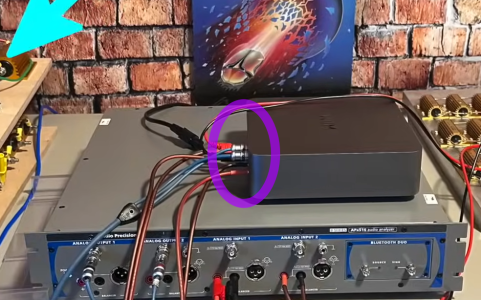
Now we have two different reviewers measuring, one using RCA (Erin) and one using TOSLINK. And if we don't just read the numbers but look at the actual graphs the results are
identical, indeed. 200 W at 1% THD+N into 4 ohm.
Erin:
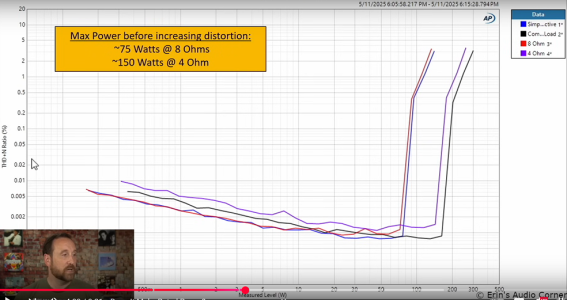
Amir:
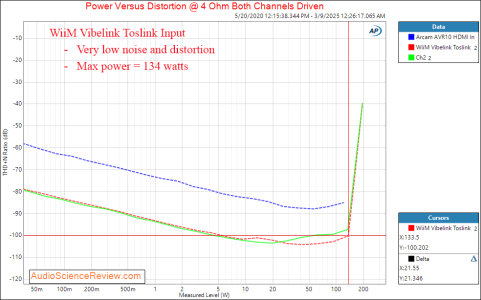
Maybe I have missed something? Is this a real issue or just hearsay?
For me this case is really closed. It's not just been hearsay, the confusing information did come from WiiM. But I don't know and don't understand what made them being overly conservative when specifying the power output initially.
The WiiM Vibelink Amp just works and sounds beautifully and its operation temperature is objectively low under all conditions.





